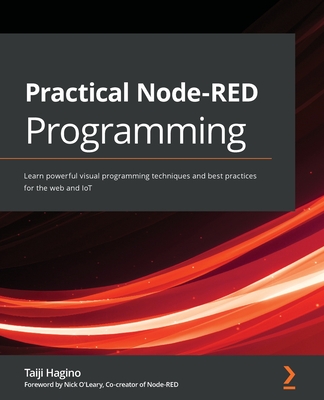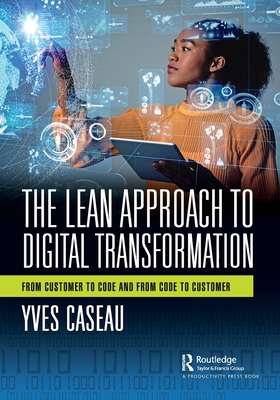Build Your Own IoT Platform: Develop a Flexible and Scalable Internet of Things Platform
暫譯: 打造自己的物聯網平台:開發靈活且可擴展的物聯網平台
Tamboli, Anand
商品描述
Every solution that is in some way related to the IoT needs a platform; learn how to create that platform with us. This book is about being agile and reducing your time to market without breaking the bank. It is about designing something that can scale incrementally without rework and potentially disrupting the current work.
So, the key questions are: What does it take? How long does it take? And, how much does it take to build your own IoT platform? This book answers these questions and provides you with step-by-step guide to building your own IoT platform.
In this book, the author highlights what the core of an IoT platform looks like. There are always some must-haves and some nice-to-haves. This book distinguishes the two and focuses on building the must-haves. Building your IoT platform is not only the most significant cost-saver but can also be a satisfying learning experience. This edition will extend your work with a sample project to clarify the concepts and show you the possibilities. Additional chapters will also shed some light on the hardware interface and considerations.
What You Will Learn
· Master how to architect an interconnected system and develop a flexible platform architecture
· Understand how to prioritize system requirements with a bottom-up approach
· Design and build a robust IoT communications platform
· Create an end-to-end application using guidelines in this book
Who Is This Book For
IoT developers with basic-to-intermediate programming skills, small business owners, as well as entrepreneurs and startup founders would benefit from this book
商品描述(中文翻譯)
每個與物聯網(IoT)相關的解決方案都需要一個平台;與我們一起學習如何創建這個平台。本書旨在幫助您靈活應對,縮短上市時間而不會造成財務負擔。它關於設計一個可以逐步擴展的系統,而不需要重工,並且不會對當前的工作造成干擾。
因此,關鍵問題是:需要什麼?需要多長時間?以及,建立自己的物聯網平台需要多少成本?本書將回答這些問題,並提供逐步指南來幫助您建立自己的物聯網平台。
在本書中,作者強調了物聯網平台的核心組成部分。總是有一些必備的功能和一些可選的功能。本書區分了這兩者,並專注於構建必備的功能。建立您的物聯網平台不僅是最重要的成本節省,還可以成為一個令人滿意的學習經歷。本版將通過一個示範項目來擴展您的工作,以澄清概念並展示可能性。附加章節還將闡明硬體介面和考量因素。
您將學到什麼
· 掌握如何架構一個互聯系統並開發靈活的平台架構
· 理解如何以自下而上的方法優先考慮系統需求
· 設計並構建一個穩健的物聯網通信平台
· 使用本書中的指導創建一個端到端的應用程式
這本書適合誰
具備基本到中級程式設計技能的物聯網開發者、小企業主,以及企業家和創業者將從本書中受益。
作者簡介
Anand is an award-winning author, innovator, professional speaker, and futurist. A sought-after thought leader, he helps people adapt, leverage technology, and transform with the power of creativity and innovation.
Anand specializes in areas that intersect technology and people. As a technology, innovation, and transformation specialist, he is well-known for bringing ideas and strategies to life.
Being a polymath, he often sheds new light on a topic you think is "done to death." Having worked with several Fortune 500 multinationals for the past two decades, he has cross-industry, multi-cultural experience.
作者簡介(中文翻譯)
Anand 是一位獲獎作家、創新者、專業演講者和未來學家。他是一位備受追捧的思想領袖,幫助人們適應、利用科技,並透過創意和創新來轉型。
Anand 專注於科技與人之間的交集領域。作為科技、創新和轉型的專家,他以將想法和策略付諸實踐而聞名。
作為一位博學者,他經常為你認為「已經討論過無數次」的主題帶來新的見解。在過去二十年中,他曾與多家《財富》500 強的跨國公司合作,擁有跨行業和多文化的經驗。
目錄大綱
Chapter 1: So... You Want to Build Your Own!
- The Background of IoT and Our Focus
- How Many Platforms Are Out There?
- Platforms Supporting Network Servicing
- Platforms Sitting Between Networks and Applications
- Application-Layer Development Platforms
- What Should a Good IoT Platform Have?
- Why Should You Build Your Own IoT Platform?
- Summary
Chapter 2: The Building Blocks of an IoT Solution
- The Functional Blocks of an IoT Solution
- The Detailed Block Diagram of an IoT Platform
- Is Everything from this Block Architecture Mandatory?
- What Is the Proposed Approach?
- Summary
Chapter 3: The Essentials for Building Your Own Platform
- Deciding Cloud Instance Specifics
- Additional Specifications
- Where Do We Get this Cloud Instance?
- What About Our Own Machine?
- Expanding on the IoT Platform Block Diagram
- Edge Interface, Message Broker, and Message Bus
- Message Router and Communications Management
- Time-Series Storage and Data Management
- REST API Interface
- Microservices
- Rule Engine
- Device Manager and Application Manager
- Our Own IoT Platform Block Diagram
- Summary
Chapter 4: Let's Create Our Platform Wish List
- Connecting with the Platform in Real Time
- Using MQTT as the Message Broker
- How Do We Want to Store the Data?
- Data Storage Schema
- Accessing Platform Resources Through APIs
- Data Accessing APIs
- Elementary Microservices and Utilities
- Routing and Filtering Data and Messages
- Updated Block Diagram of Our IoT Platform
- Summary
Chapter 5: Here We Go!
- Initializing the Cloud Instance
- Register and Create
- Choosing an Operating System
目錄大綱(中文翻譯)
Chapter 1: So... You Want to Build Your Own!
- The Background of IoT and Our Focus
- How Many Platforms Are Out There?
- Platforms Supporting Network Servicing
- Platforms Sitting Between Networks and Applications
- Application-Layer Development Platforms
- What Should a Good IoT Platform Have?
- Why Should You Build Your Own IoT Platform?
- Summary
Chapter 2: The Building Blocks of an IoT Solution
- The Functional Blocks of an IoT Solution
- The Detailed Block Diagram of an IoT Platform
- Is Everything from this Block Architecture Mandatory?
- What Is the Proposed Approach?
- Summary
Chapter 3: The Essentials for Building Your Own Platform
- Deciding Cloud Instance Specifics
- Additional Specifications
- Where Do We Get this Cloud Instance?
- What About Our Own Machine?
- Expanding on the IoT Platform Block Diagram
- Edge Interface, Message Broker, and Message Bus
- Message Router and Communications Management
- Time-Series Storage and Data Management
- REST API Interface
- Microservices
- Rule Engine
- Device Manager and Application Manager
- Our Own IoT Platform Block Diagram
- Summary
Chapter 4: Let's Create Our Platform Wish List
- Connecting with the Platform in Real Time
- Using MQTT as the Message Broker
- How Do We Want to Store the Data?
- Data Storage Schema
- Accessing Platform Resources Through APIs
- Data Accessing APIs
- Elementary Microservices and Utilities
- Routing and Filtering Data and Messages
- Updated Block Diagram of Our IoT Platform
- Summary
Chapter 5: Here We Go!
- Initializing the Cloud Instance
- Register and Create
- Choosing an Operating System






























